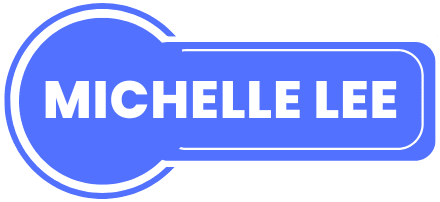Let’s set the scene. You’ve poured your heart into a product, created a name you love, designed packaging that slaps—and boom, someone else starts selling under your name, hijacking your listings, or worse… filing their trademark before you got around to it.
Ouch.
Whether you’re slinging hand-poured candles on Etsy or dominating a niche on Amazon FBA, trademark protection isn’t optional—it’s your brand’s bodyguard, shield, and legal muscle all in one.
And the earlier you lock it in, the better. Because when you’re building a business on a marketplace you don’t own? You’ve gotta protect what you do.
Let’s break it down: no fluff, no legalese overload—just practical, punchy trademark tips that’ll help you secure your brand before someone else does.
Wait, What Even Is a Trademark?
A trademark is like your brand’s legal name tag. It protects things like:
- Your brand name
- Your logo
- Your slogan
- Even your product packaging or a specific design (in some cases)
In the simplest terms? A trademark makes sure you own your brand’s identity—and that no one else can cash in on your hard-earned recognition.
Real Talk: Why You Need a Trademark on Amazon & Etsy
1. Because Copycats Are Real (and Ruthless)
On Amazon, brand hijackers can steal your listing, duplicate your product, or confuse your customers. On Etsy? Someone can open a shop with a similar name and start ranking next to you.
With a trademark, you can legally shut them down.
2. Because Trademarks Unlock Platform Perks
- Amazon Brand Registry: You can’t access it without a registered trademark. This gives you tools like:
- A+ Content (fancy product listings)
- Brand analytics
- Reporting tools to catch counterfeiters
- Protection from listing hijacks
- Etsy IP Enforcement: Etsy takes IP rights seriously—but only if you can prove you have them. Without a registered trademark, your takedown requests won’t go far.
3. Because It’s First Come, First Served (and Not Always Fair)
In the U.S., whoever files first gets the advantage—especially on Amazon. If someone else trademarks your brand name before you, they could potentially:
- Report you for infringement (yes, even if you used it first)
- Get your listings removed
- Ban your seller account
- Sue you (worst-case, but it happens)
Trademark squatters are a thing. Don’t let them get to your brand first.
Story Time: When My Friend Got Trademarked Out of Her Own Brand
A friend of mine—let’s call her Maya—started a cute handmade jewelry biz on Etsy. She grew it from a side hustle to a full-blown brand. She had a name everyone loved, a loyal customer base, and tons of five-star reviews.
But she never trademarked the name.
Six months later, someone filed a trademark for a very similar name… and then sent her a cease-and-desist letter. Etsy flagged her shop. She had to rename everything, rebrand, and start over with her SEO.
It was brutal. Don’t be Maya.
So… How Do You Get a Trademark?
Great question. Here’s the step-by-step breakdown:
1. Do a Trademark Search (Before You Fall in Love With a Name)
Before you print 500 labels or buy a domain, check:
- USPTO.gov for registered trademarks
- Google & social media for existing brands
- Amazon/Etsy search to spot close competitors
Why? Because if someone already has a similar name in your category, the USPTO might reject your application—or worse, you could get sued.
2. Decide What You’re Trademarking
The most common things sellers trademark:
- Word marks (brand name, e.g. “Glow&Co”)
- Logo marks (your actual logo design)
- Taglines or product names
For Amazon Brand Registry, a word mark is the fastest route (no need to upload a graphic logo).
3. Choose the Right Class
Trademarks are filed under classes based on what you sell. Example:
- Jewelry = Class 14
- Apparel = Class 25
- Skincare = Class 3
Choosing the wrong class = rejection. You can use the USPTO’s ID Manual to find the right one, or work with a lawyer to get it right the first time.
4. File the Trademark Application
You’ve got two main options:
- DIY on USPTO.gov (cost: ~$250–$350 per class)
- Cheaper, but riskier if you mess it up
- Hire a Trademark Attorney (cost: ~$750–$1500+)
- Safer, faster, less chance of rejection
BONUS: Some attorneys offer free consultations. Definitely worth it if you’re unsure.
5. Wait (And Use That Time Wisely)
It takes 6–9 months (sometimes longer) to get your trademark approved.
While you wait:
- Start gathering proof of use (product photos, labels, website screenshots)
- Prepare your Amazon Brand Registry application (once you get the serial number, you can start the process)
- Set up branding systems so you’re ready to scale once protected
Common Mistakes Sellers Make (Don’t Be That Person)
- Using a name that’s too generic (like “Beauty by Jane” or “Natural Soaps”)
- Copying someone else’s logo style
- Not checking the trademark database BEFORE naming their shop
- Assuming Etsy or Amazon will protect them (they won’t)
- Delaying trademark registration until it’s too late
You wouldn’t leave your car unlocked in a big city. Don’t leave your brand unprotected on the world’s busiest online marketplaces.
Bonus: Trademarking Internationally
If you sell outside the U.S. (hello, Canada, UK, EU!), you may want to file trademarks there too. You can:
- Use the Madrid Protocol to apply in multiple countries at once
- File directly with other countries’ trademark offices
- Start with the U.S. and expand later
Amazon’s different regions (UK, DE, etc.) each require local trademark registration for Brand Registry. Plan ahead if you’re going global.
TL;DR – Your Trademark Checklist
- Do a thorough search
- Lock down your brand name early
- File in the right class
- Prioritize word marks (especially for Amazon)
- Don’t wait for someone to steal your name—act now
- Consider international protection if selling globally
Final Thoughts: Your Brand = Your Asset
You built something real.
You named it. Designed it. Poured your time, creativity, and (let’s be honest) a whole lot of late nights into it.
Don’t let someone take it away because you skipped the paperwork.
Your brand is your business. Protect it like it matters—because it does.




